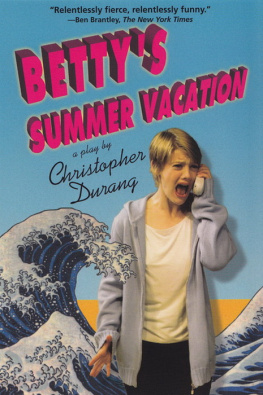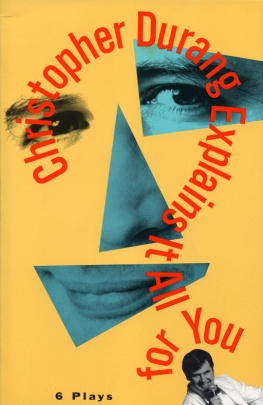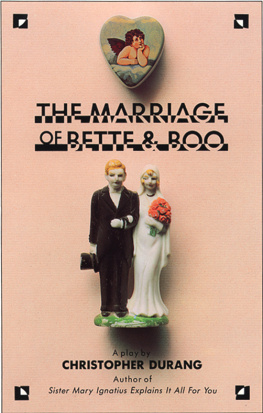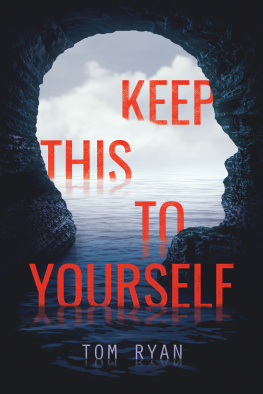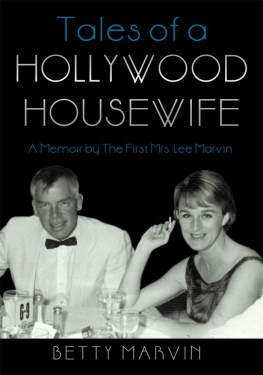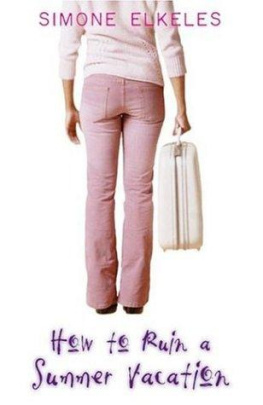
Betty's Summer Vacation
Works of Christopher Durang published by Grove Press
T HE M ARRIAGE OF B ETTE AND B OO
L AUGHING W ILD AND B ABY WITH THE B ATHWATER
C HRISTOPHER D URANG E XPLAINS I T A LL FOR Y OU
T HE N ATURE AND P URPOSE OF THE U NIVERSE
D ENTITY C RISIS
T ITANIC
T HE A CTOR'S N IGHTMARE
S ISTER M ARY I GNATIUS E XPLAINS I T A LL FOR Y OU
B EYOND T HERAPY
B ETTY'S S UMMER V ACATION
CHRISTOPHER DURANG
Betty's Summer Vacation

Grove Press
New York
Copyright 1999 by Christopher Durang
Foreword copyright 1999 by Tim Sanford
Introduction copyright 1999 by Michael Feingold
All rights reserved. No part of this book may be reproduced in any form or by any electronic or mechanical means, including information storage and retrieval systems, without permission in writing from the publisher, except by a reviewer, who may quote brief passages in a review. Any members of educational institutions wishing to photocopy part or all of the work for classroom use, or publishers who would like to obtain permission to include the work in an anthology, should send their inquiries to Grove/Atlantic, Inc., 841 Broadway, New York, NY 10003.
CAUTION: Professionals and amateurs are hereby warned that Betty's Summer Vacation is subject to a royalty. It is fully protected under the copyright laws of the United States, Canada, United Kingdom, and all British Commonwealth countries, and all countries covered by the International Copyright Union, the Pan-American Copyright Convention, and the Universal Copyright Convention. All rights, including professional, amateur, motion picture, recitation, public reading, radio broadcasting, television, video or sound taping, all other forms of mechanical or electronic reproduction, such as information storage and retrieval systems and photocopying, and rights of translation info foreign languages, are strictly reserved.
First-class professional, stock, and amateur applications for permission to perform it, and those other rights stated above, must be made in advance to Helen Merrill Ltd., 295 Lafayette Street, Suite 915, New York, NY 10012.
FIRST EDITION
Library of Congress Cataloging-in-Publication Data
Durang, Christopher, 1949
Betty's summer vacation / by Christopher Durang.
p. cm.
ISBN 0-8021-3661-3
eISBN: 978-0-8021-8890-8
1. Summer homesDrama. 2. Young womenDrama. 3. VacationsDrama. I. Title.
PS3554.U666 B38 2000
812.54dc2199-051709
0001020310987654321
To John Augustine and Kristine Nielsen
Foreword
For me, as both a citizen and a producer, Betty's Summer Vacation arrived on my desk in the nick of time. As a dyed-in-the-wool liberal humanist, I'd always assumed the proper response to our burgeoning junk culture was to sequester myself into a little ivory tower of civility. But lately the waves seemed to be turning tidal, rendering my little tower into a crumbling sand castle. Try as I might, whenever the latest scandal or horror hit, to duck into my office and close the door behind me, eventually the tabloid ooze would start seeping under my door and suck me into it. During late-night channel surfing, my guard would fall, and I'd pause to hear the talking heads and waggish stand-ups holding forth or cracking wise about whatever latest headline. By the time The New York Times would begin holding forth their in-depth news analyses and tsk-tsking Op-Ed-page sociological tomes, you would inevitably find me poring over them.
As a producer of new American plays who oversees the reading of twelve to fifteen hundred play submissions annually, I found the glut of misguided efforts to skewer or portray this state of affairs perhaps even more dispiriting. Hand me a play and tell me it's a hilarious satire on our tabloid culture and watch my eyes glaze over. The targets are too easy. The results usually seem shrill and rote. On the other hand, for me, the kind of theater that seeks to probe the dark underbelly of society with grim realism usually seems voyeuristic and sensationalistic. How can the violence of the world ever be real to us, especially when it gets translated into infotainment within minutes of its occurrence? Betty's Summer Vacation, however, follows a much different route through these poles of absurdity and horror. The first act follows an inverse dynamic from that created by tabloid events in real life where repugnance deteriorates rapidly into sick humor, beginning with a breezy nonchalance that curdles into revulsion. Act Two one-ups itself by shifting focus from the lurid contents of the world (which, by the way, have remained offstage and are therefore completely unreal to us anyway), to our reaction to and appetite for these events. Thus we essentially witness the tabloidization of the world. In the face of this inexorable, degrading force, Betty becomes the lone voice of reason, arguing sensibly and with increasing exasperation for the basic, humane tenets of civilization. But Betty might as well be Alice in Wonderland with Voices from the Ceiling playing the role of Red Queen.
The achievement of Betty's Summer Vacation seems even more satisfying when viewed in the context of Christopher's recent artistic history. Many would agree Durang's early career reached its apex with The Marriage of Bette and Boo, produced at the Public Theater in 1985. Few remember his next play, Laughing Wild, produced at Playwrights Horizons in 1987. This bravely personal and critically important transitional play, in which Chris also acted, costarring with E. Katherine Kerr, was roundly dismissed at the time, treated almost as if it wasn't a play at all. In retrospect, it seems ahead of its time, uncannily foreshadowing the deluge of performance artists of recent years. But it also marks a shift in his work more directly toward social satire. The targets of his earlier work were frequently the grotesqueries that imprint us in childhood, but with Laughing Wild his perspective seems more adult, in a way, focusing more on the skewed indignities we endure every day. Chris's output tapered off somewhat in the following decade, but he did wrestle again with these contemporary hobgoblins in Media Amok, produced at the American Repertory Theatre in 1992, and Sex and Longing, Chris's dark, ambitious mock epic, produced by Lincoln Center in 1996. While this production featured a game, Valkyrian performance by Sigourney Weaver and an exquisite comedic turn by Dana Ivey, it seemed to get swallowed up by the Cort Theatre, and even Chris himself admits it was overwritten. Still, the torrent of incontinent critical vitriol it unleashed seems puzzling even now. One wondered if Chris would ever write again. In this light, Betty's Summer Vacation feels like a triumph. Undeterred by the fear and loathing elicited by the dark and thorny Sex and Longing, Chris seemed determined to take the darkness one step further. Yet he did so with a rigorous formal control that not only concentrated his themes, but also sharpened the detail and intimacy of his characterizations, and allowed the natural cheerful perversity of his voice to flourish. Chris had been after something as an artist for about twelve years. With Betty's Summer Vacation, he nailed it.
Of course, it's one thing to appreciate Betty's Summer Vacation, and quite another to produce it. It's easily one of the most outrageous plays I have ever read, and I knew it would also prove to be one of the trickiest to produce. The production would have to negotiate the same line between horror and absurdity that makes the play so successful. Push the humor and the play's darkness would cut your legs off. Push the darkness and you would suffocate in amorality. Again, Alice in Wonderland provides a useful paradigm for approaching the production: The world is morally upside down, but seems perfectly normal to its inhabitants. In this regard, Nicholas Martin proved an especially felicitous choice for director. He understood instinctively that the play requires actors who are quick, focused, direct, and charming, and we assembled a sublimely spirited ensemble headed by the indefatigable and inimitable Kristine Nielsen as Mrs. Siezmagraff and the droll, Keane-eyed killer screamer Kellie Overbey as Betty. The production was also immeasurably helped by its peerless design team, which included Kevin Adams's lights, Michael Krass's costumes, Kurt Kellenberger's sound, Peter Golub's pitch-perfect original music, and especially the extraordinary set by Tom Lynch, whose eight-doored ground plan pre-mapped the easy, high-energy fluidity of the stage movement, and whose collapsing ceiling and receding set wagon so effectively punctuated the play's climactic moments. Ultimately, of course, it was Nicky's direction that was responsible for the controlled energy and tone of the production. Very few premiere productions so fully realize the original potential and intent of their scripts.
Next page
